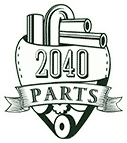99 00 01 02 Saab 95 9-5 Sid2 Used System Information Display Clock Sid 2 on 2040-parts.com
New York, US
USED SID2 unit for 99-02 Saab 9-5
All pixels work, all bulbs work.
THIS UNIT HAS SOME SCUFFS ON THE BUTTONS AND MINOR BLEMISH ON THE LCD SCREEN THAT DOES NOT AFFECT READABILITY (PLEASE SEE ATTACHED PICTURES FOR DETAILS)
P/N 5263264
Please make sure this is the part you need before PURCHASE.
Switches / Controls for Sale
 Anchor engine mount 9209(US $74.44)
Anchor engine mount 9209(US $74.44) Anchor engine mount 9188(US $93.72)
Anchor engine mount 9188(US $93.72) Smp/standard ds-52 switch, multi-function/combination-wiper switch(US $26.40)
Smp/standard ds-52 switch, multi-function/combination-wiper switch(US $26.40) Saab 900 9.3 9.5 fog light switch oe # 4409223 green connector(US $24.00)
Saab 900 9.3 9.5 fog light switch oe # 4409223 green connector(US $24.00) Smp/standard s-972 electrical connector, body wiring-trunk ajar switch connector(US $22.22)
Smp/standard s-972 electrical connector, body wiring-trunk ajar switch connector(US $22.22) Dorman 901-332 switch, mirror-door mirror switch(US $18.14)
Dorman 901-332 switch, mirror-door mirror switch(US $18.14)
Volkswagen e-Golf stars at the 2013 Frankfurt Motor Show
Wed, 11 Sep 2013Volkswagen is joining the revolution here at Frankfurt 2013 with its new all-electric e-Golf. And far from being an impractical method of transport to appease eco hippies and excite forward-thinking car geeks, it’s actually perfectly practical. Electric cars are rapidly becoming an unstoppable silent force, so it’s time to embrace them.
KATIE PRICE SUFFERS BAG SNATCH
Mon, 24 Feb 2014KATIE PRICE has hit out at the "pure scum" who smashed a window of her car and stole her designer handbag. The model and businesswoman posted a picture on Twitter showing a broken window and glass lying on the car seat. Price said the Louis Vuitton bag contained "valuables".
VW to cover maintenance costs for sludge-damaged engines
Tue, 28 Sep 2010Volkswagen AG has agreed to pay maintenance costs under a proposed settlement in a class-action lawsuit over sludge-damaged engines in 479,768 VW and Audi models. Judge Joseph Tauro of the U.S. District Court in Boston gave conditional approval of the settlement last week.





